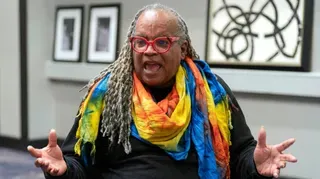January 18, 2013
Obesity in Young Kids Dropped in NYC, Grew in LA
Jason St. Amand READ TIME: 2 MIN.
In the battle against childhood obesity, New York City appears to be doing better than Los Angeles, at least for low-income preschoolers.
A study released Thursday compared obesity rates for young poor children in the nation's two largest cities over nine years. Rates dipped in New York from about 19 percent to 16 percent. But in Los Angeles they rose from 17 percent to more than 21 percent before dropping to about 20 percent.
One reason for the difference: Los Angeles kids included many more Mexican-Americans, and obesity is more common in Mexican-American boys than in white or black kids.
The study joins other recent reports of declines in childhood obesity rates in places like Philadelphia, Anchorage and Kearney, Neb.
New York City's health commissioner said he was glad to hear the study's results, calling them "a big success." But with high rates of overweight and obesity in older children and adults, "there is much more work to be done,' Dr. Thomas Farley said in a statement.
The director of Los Angeles County's health department said it's not clear why the rate rose there, but he was heartened to see it peak around 2009 and decline after.
"This is the first clear evidence - in the largest municipalities in the country - of this kind of decline" in pre-school age children," said Dr. Jonathan Fielding in a phone interview.
The research focused on children ages 3 and 4 enrolled in a government program for women, infants and young children known as WIC that provides food vouchers and other services. The children in the New York and California programs are measured and weighed every six months.
The study covered 2003-2011 and the number of children enrolled varied each year, with as many as 67,000 in New York City and 150,000 in Los Angeles County.
New York's WIC program started very early - in the 1990s - in trying to promote exercise, healthy eating and breastfeeding. That's probably one reason New York City's obesity rate started dropping earlier, said the study's lead author, Jackson Sekhobo of the New York State Department of Health.
It probably also helped that walking and mass transit is much more common in New York City than in car-centric places like Los Angeles, he added.
But another primary explanation is the breakdown of the kids in the two cities. In 2011, about 85 percent of the Los Angeles children in the study were Hispanic, and most were Mexican-American - a group with the highest reported childhood obesity rates, at least among boys.
In New York, 46 percent were Hispanic, with far fewer Mexican-Americans, Sekhobo noted.
Nationally, about 12 percent of preschool-age children are obese, according to the Centers for Disease Control and Prevention. About 18 percent of children ages 6 to 11 are obese, and about the same proportion of adolescents are that fat.
About 36 percent of adults are obese, according to the agency's figures.
After decades of alarming reports of Americans gaining weight, "we're seeing perhaps the beginning of the end of the obesity epidemic," CDC Director Dr. Thomas Frieden said in a statement.
The CDC released the study Thursday.







